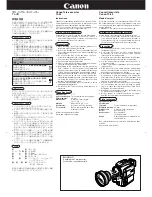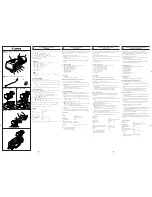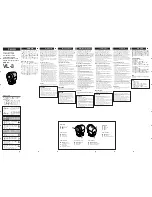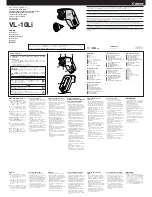
FLIR Camera Adjustments
102-PS242-100-01
Rev110
June 2014
Page 20 of 28
AGC Filter. The AGC filter is an IIR filter used to adjust how quickly the AGC algorithm reacts to a
change in scene or parameter value. The filter is of the form
n
' =
n
*
+
n
'-1 * (256-
)/256
where:
n
' = actual filtered output value for the current frame
n
= unfiltered output value for the current frame
n
'-1 = actual filtered output value for the previous frame
= filter coefficient, user-selectable from 0 to 255
If the AGC filter value is set to a low value, then if a hot object enters the field of view, the AGC will
adjust more slowly to the hot object, resulting in a more gradual transition. In some applications, this can
be more pleasing than a sudden change to background brightness. For the Tau 2.7 release, a filter
coefficient of 255 is a special case for immediate updates, a value of 1 provides the most filtering or
slowest refresh rate, and a value of 0 indicates no further updates to AGC. For previous releases of Tau 2,
a filter coefficient of 0 was a special case for immediate updates, a value of 1 was the most filtering or
slowest refresh rate, and the case for no AGC updates was unavailable.
2.4
Information-based and Information-based equalization
The Tau 2.7 release and subsequent releases include the Information-based algorithms which reserve
more shades of gray for areas with more information or scene content by assigning areas with less
information or scene content lesser gray shades. By assigning lesser gray shades to areas with less
information (e.g. sky, sea, roads) the fixed pattern noise is reduced in these areas also allowing for more
detail to be given to the more interesting portions of the image. Both Information-based algorithms
undergo the plateau equalization process described in the previous section, and therefore all parameters
described also apply.
The differences between the Information-based and Information-based Equalization algorithms are
noteworthy as both have advantages. The Information-based algorithm completely excludes pixels from
histogram equalization if they are below the information threshold (described later in this section). This is
advantageous in that noise is completely removed from areas of the image determined by the algorithm to
not contain information, but scenarios in which the user is attempting to detect small temperature or
emissivity variations are not ideal for this mode because desired information may be lost depending on
the threshold. The Information-based Equalization algorithm includes every pixel independent of scene
information in the histogram equalization process, but simply weights each pixel based on the information
threshold. This mode shows more moderate improvements in scenes with large areas void of information,
but the advantage over the Information-based mode is that scene content will never be removed. Figure
22 shows the Plateau Equalization algorithm on the left for reference and the Information-based and
Information-based Equalization algorithms center and right respectively with information threshold set to
40.









































